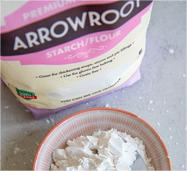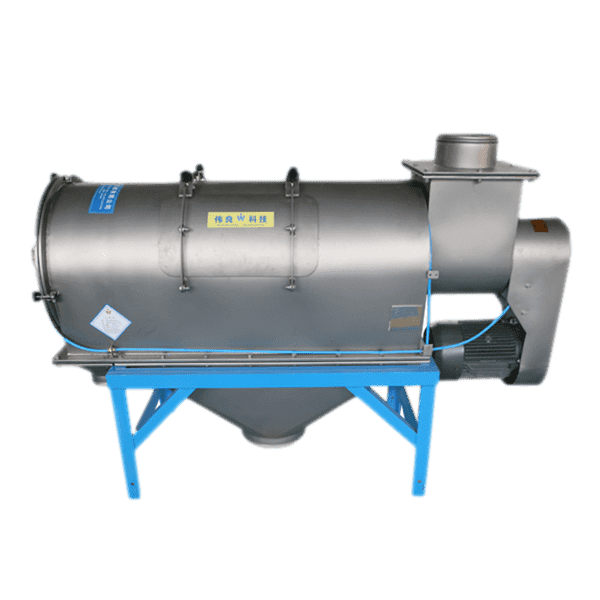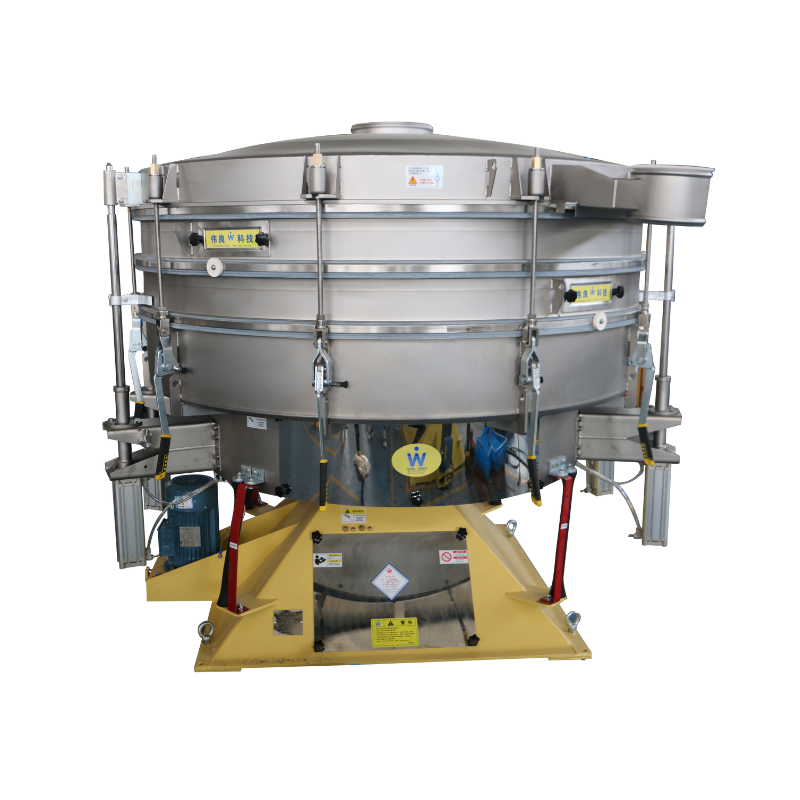
WHAT IS STARCH?
Starch, or amylum, is a complex carbohydrate consisting of numerous glucose units joined by glycosidic bonds, which exists in many foods, including grains, vegetables, and fruits. Pure starch is a white, tasteless and odorless powder that does not dissolve in cold water or alcohol.
Starch is a natural polymer, or polysaccharide, meaning that it is a long chain comprising one type of molecule. It can occur in two forms: amylose and amylopectin. Depending on the plant, starch generally contains 20 to 25% amylose and 75 to 80% amylopectin by weight.
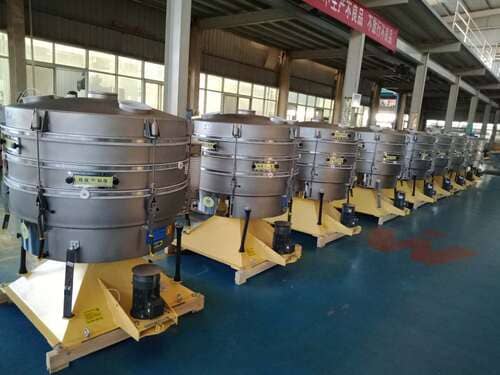
STARCH TYPES
Starch is classified into three types based on its nutritional characteristics:
- Rapidly digestible starch (RDS): This type of starch can be found in cooked foods like potatoes and bread. It is quickly converted to glucose by the body.
- Slowly digestible starch (SDS): Because of its complex structure, this starch is broken down slowly by the body. It can be found in cereal grains.
- Resistant starch (RS): This type of starch cannot be easily digested by the body and can pass through the digestive system untouched, similar to dietary fiber. It may help to maintain healthy intestinal microflora.
STARCH PRODUCTION PROCESS
The starch industry extracts and refines starches from seeds, roots and tubers, by wet grinding, washing, drying and sieving.
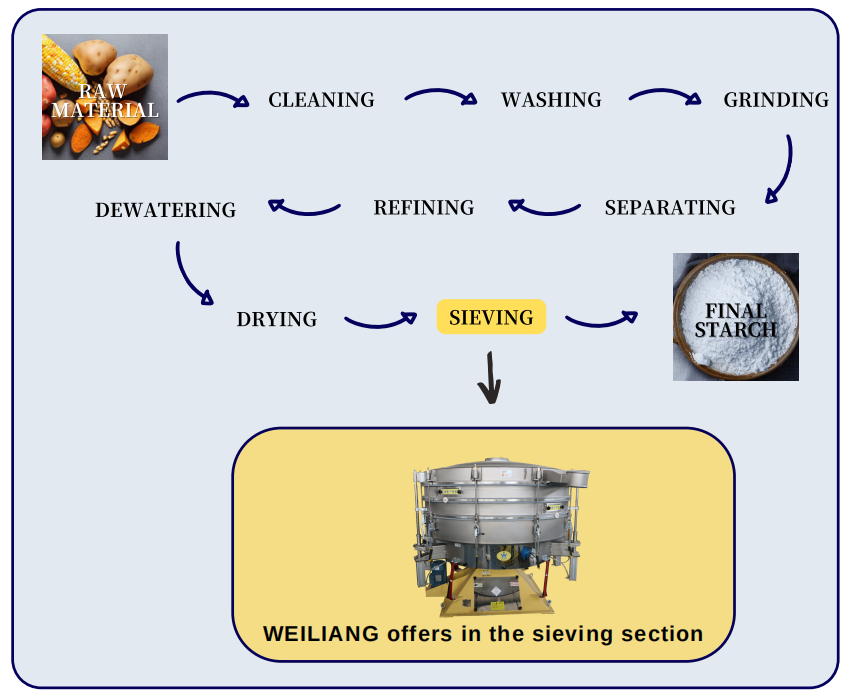
Take the cassava (tapioca) starch production process as an example.
- Firstly, it needs to remove impurities attached on raw cassava, including dry cleaning to remove sand, weeds, stones, etc. mixed with the cassava tubers and wet washing to remove sand and soil attached on the surface under the action of paddle stirring and countercurrent washing principle.
- After cleaning section, the cassava needs to be crushed into a pulp to release the starch. After crushing, it can obtain a cassava mash which contains starch and other impurities such as fibers, proteins, fats, etc. Then need to separate these impurities to get purified starch slurry. The separation process can be divided into two parts: centrifugal sieve are applied to separate fibers; hydrocyclone unit are furnished to remove protein and other liquid impurities.
- The next is to dewater and dry the tapioca starch. In this process, it needs to first dewater the purified starch milk to obtain a wet starch with a moisture content of 38-40%. The wet starch is then fed into a flash dryer to obtain a dry starch with a moisture content of around 12%.
- Finally, after the sieving process, it is ready for the packaging process. It is important to mention that the WEILIANG YBS TUMBLER SCREEN is suitable for fine screening of all types of starch.
YBS TUMBLER SCREEN
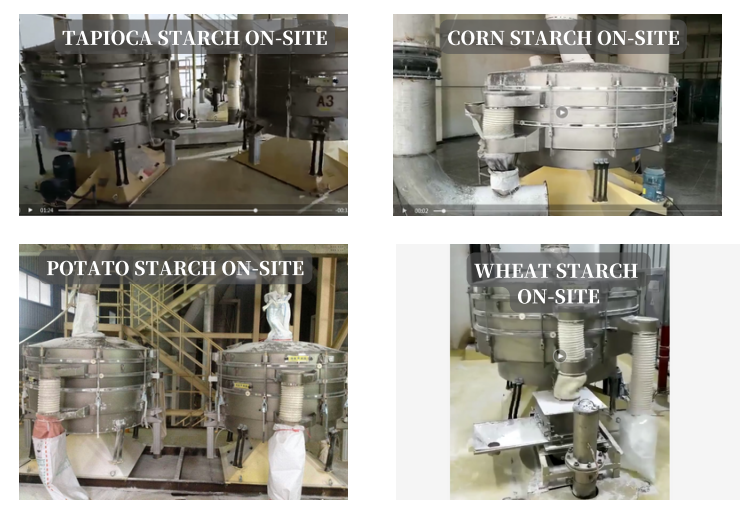
STARCH SIEVING OPTION
WEILIANG YBS TUMBLER SCREEN with high capacity and high precision, chosen by many customers for sieving starch.
| SIEVING PURPOSE Impurity removal (removal of large particles after drying) |
| SIEVING MESH 30mesh to 100 mesh |
| SIEVING CHALLENGES Poor fluidity, high viscosity, and low capacity |
| SIEVING SOLUTIONS YBS tumbler screen features: high precision, high capacity, adjustable ERT, modular screening design. High efficiency cleaning methods: bouncing ball cleaning |
| CUSTOMER CASE Weiliang has worked with over 30 starch manufacturers and has supplied nearly 100 units of YBS Tumbler Screen in starch applications, earning a good reputation |
STARCH SIEVING OPTION
In addition to YBS Tumbler Screen, S49 Vibrating Screen and WLQ Centrifugal Screen are also chosen for sieving starch.
In summary, YBS Tumbler Screen is chosen by most manufacturers to sieve starch because of its high capacity and high precision. More importantly, YBS Tumbler Screen can be modularized to achieve fine starch sieving.
S49 Vibrating Screen and WLQ Centrifugal Screen can also be used to screen starch with cost effectively.
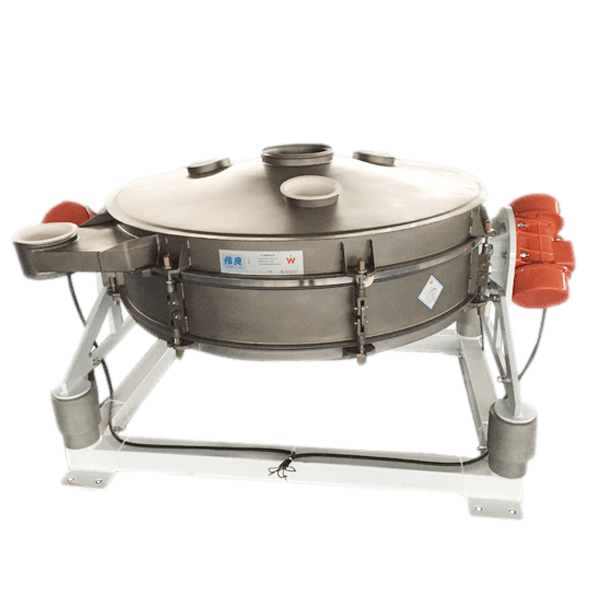
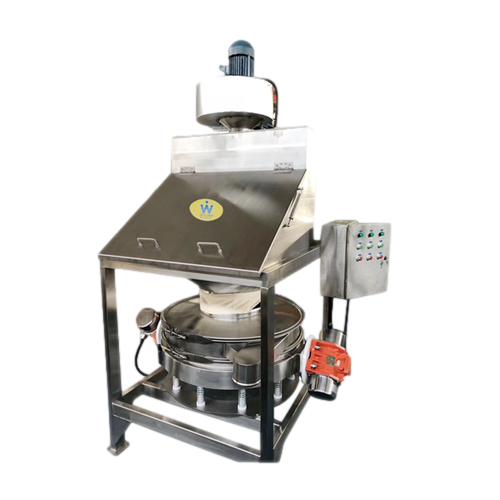
STARCH APPLICATION
1. Use as food additive
Food starches are commonly used as thickeners, extenders, and stabilizers in foods such as puddings, soups, sauces, custards ,gravies, pie fillings and salad dressings as additive in food processing. Starch can also be used to make pasta and noodles, and is a special binder for processed meats.
2. Use in pharmaceutical industry
Starch is also used as an excipient, tablet disintegrant, and binder in the pharmaceutical industry.
3. Use in construction industry
Starch is used in the production of gypsum wall board.
4. Use in oil exploration
Starch is used to adjust the viscosity of drilling fluid, which is used to lubricate the drill head and suspend the grinding residue in petroleum extraction.
5. Use in the printing industry
Food grade starches are used in the production of anti-set-off spray powder, which is used to separate printed sheets of paper to avoid wet ink being set off.
6. Others
- Used in papermaking
- Used in laundering of clothes.
- Used in other health and beauty products.
- Used in adhesives or glues for book-binding, wallpaper adhesives, paper
- sack production, school glues and bottle labeling…
DIFFERENT KINDS OF STARCH
WHEAT STARCH
Wheat starch is a carbohydrate found in wheat and is a common part of the human diet. It’s primary use in the food industry is a thickening agent. It also works as an emulsifier, stabilizer and a clouding or glazing agent.
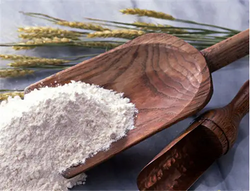
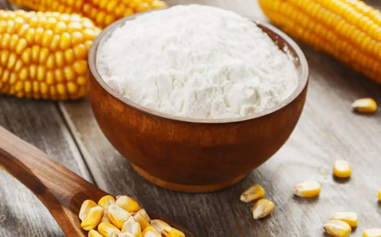
CORN STARCH
Corn starch is also known as maizena, which is made from dried and ground corn kernels. It is usually used as a thickening liquid in soups, sauces or gravies. It will produce a translucent, glossy effect.
POTATO STARCH
Potato starch is extracted from the potato. It is a fine, white powder. It is used in a similar way to corn starch to thicken liquids and can also be used in baking recipes as it adds moisture to the recipe
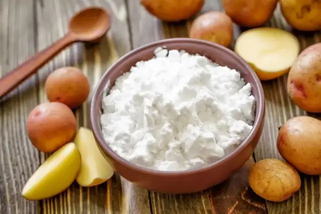
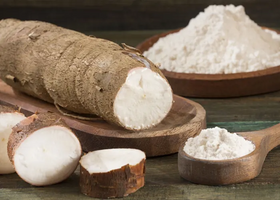
TAPIOCA STARCH
Tapioca starch is extracted from the roots of the cassava plant. It thickens ingredients quickly and also works well as a binding agent.
RICE FLOUR
Rice flour is made from ground raw rice. It is mainly used as a thickening agent in recipes that need refrigeration or freezing since it inhibits liquid separation.
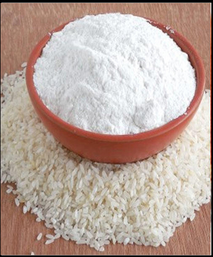
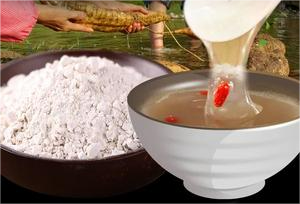
KUDZU POWDER
Kudzu is a high quality starch made from the roots of the Kudzu plant. The roots, flowers and leaves of Kudzu are used in pharmaceuticals, such as for the treatment of alcoholism and to reduce the symptoms of alcohol hangovers including headaches, stomach upsets, dizziness and vomiting.
ARROWROOT POWDER
Arrowroot is a tropical plant also known as Maranta arundinacea, extracted from the root. This powder is flavourless and becomes clear when cooked, which makes it perfect for thickening juices or clear sauces. It is not often used because of its high cost.
